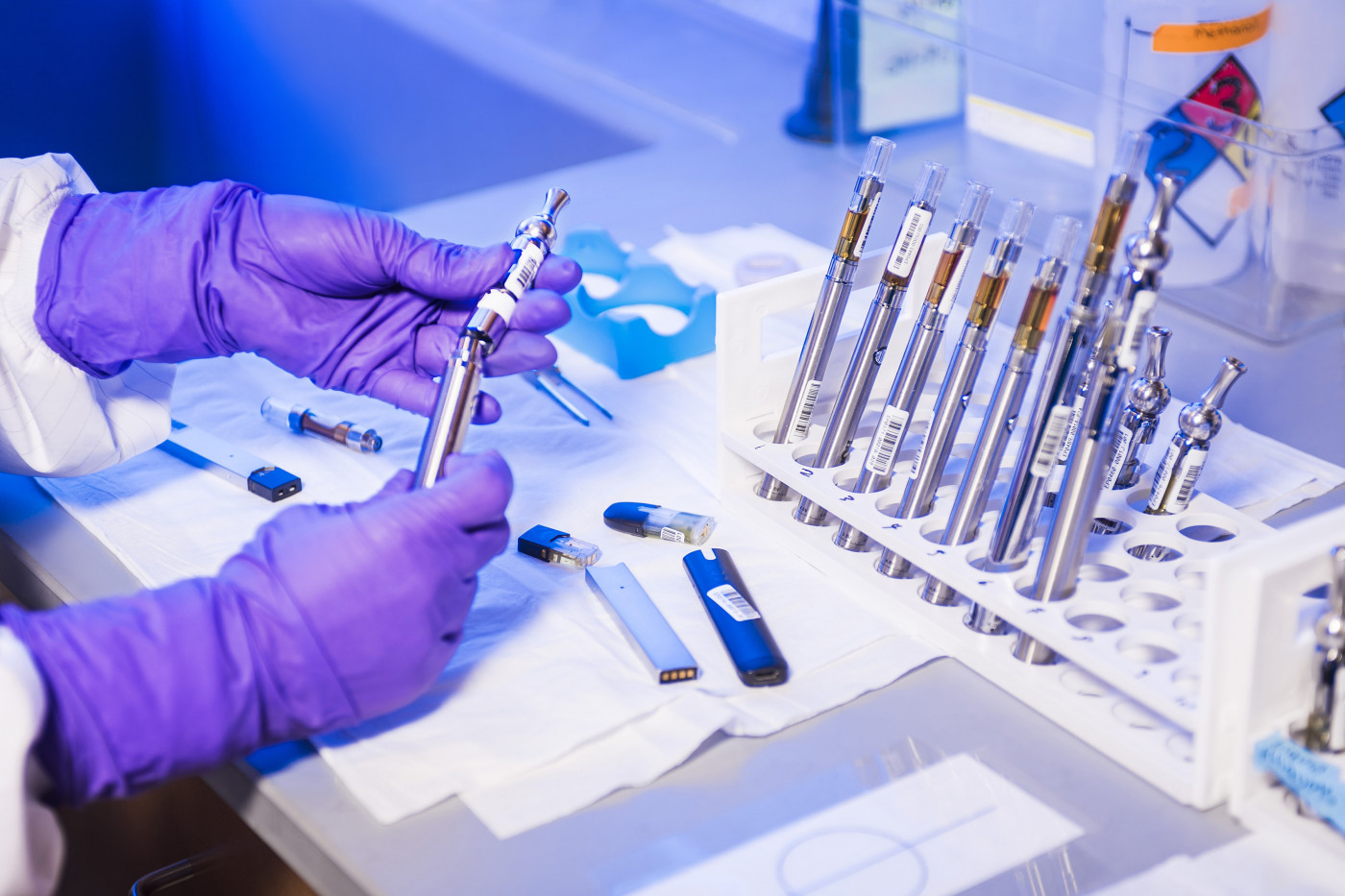Nicotine Inhaled Often, as with E-cigarette Use, Linked to PH in Mice

Chronic inhalation of nicotine, the addictive component of all tobacco products, is enough to trigger changes in pulmonary arteries and in the heart’s right chamber that can cause pulmonary hypertension (PH), a recent study in mice found.
The study, “Effects of Chronic Nicotine Inhalation on Systemic and Pulmonary Blood Pressure and Right Ventricular Remodeling in Mice,” was published in the journal Hypertension.
Pulmonary hypertension is a chronic and progressive disease in which the pulmonary arteries become narrowed and blocked, requiring the heart to pump harder for blood to flow through these blood vessels. This extra effort can enlarge and weaken the heart, and lead to heart failure.
Cigarette smoking is known to be associated with pulmonary hypertension in people and in animal models, but the role of nicotine in the disease is less well understood. In the era of electronic cigarettes (e-cigs), which allow nicotine to be inhaled as a vapor and are rising in use as cigarette smoking declines, determining if a link exists between this compound and disease is important.
Researchers at Louisiana State University Health Sciences Center investigated how chronic nicotine inhalation affected blood pressure, pulmonary artery pressure, and cardiac function in mice exposed to normal or nicotine-filled air for 12 hours each day for eight weeks.
“The murine [mouse] nicotine inhalation model employed in this study closely mimics human smokers/e-cig users, in terms of route of nicotine exposure, dosage, and chronicity (over 8-week period in mice),” the researchers wrote.
They found that nicotine-exposed mice exhibited high systolic blood pressure — the pressure in arteries during the contraction of the heart — as early as the first week of exposure.
This increase lasted through week three then returned to normal levels over weeks four through eight, suggesting a development of tolerance to nicotine or compensatory mechanisms coming in to regulate blood pressure.
“The increase was transient, but was sufficiently long to pose potential health risks in individuals with preexisting cardiopulmonary conditions,” Eric Lazartigues, PhD, professor at LSU Health New Orleans School of Medicine, said in a press release.
At the end of the eight weeks, nicotine exposure had led to pulmonary hypertension, with exposed animals showing higher blood pressure in their right ventricle — which pumps blood into the lungs — along with a thickening of the walls and right ventricle enlargement. The left ventricle — responsible for pumping blood to the rest of the body — was not affected.
“Interestingly, the adverse effects of inhaled nicotine are largely isolated to the right heart, as we found no significant changes in left heart remodeling or protein expression,” said Xinping Yue, MD, PhD, a professor at LSU School of Medicine.
The team believes that these changes in the right ventricle of nicotine-exposed animals were likely caused by the excess production of the ACE protein and activation of the MAPK signaling pathway — both associated with pulmonary hypertension.
Pulmonary vessel remodeling, a disease hallmark, was also observed in nicotine-exposed animals. But while nicotine did not increase artery wall thickness, it did cause some arterioles that normally not covered by muscle cells to become muscularized.
“Our study, for the first time, shows that chronic inhalation exposure to nicotine alone in mice leads to PH with pulmonary vascular and [right ventricular] remodeling,” the researchers wrote.
“This study should help raise the awareness of the adverse effects of nicotine inhalation on the cardiopulmonary system and help formulate public health policies on e-cigarettes,” said Jason Gardner, PhD, also a professor at the LSU School of Medicine.







